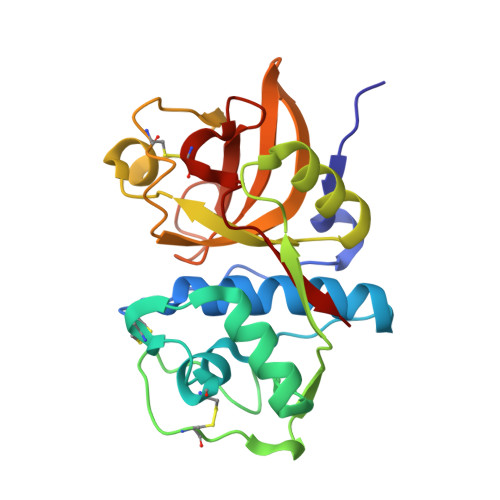Semicarbazone-based inhibitors of cathepsin K, are they prodrugs for aldehyde inhibitors?
Adkison, K.K., Barrett, D.G., Deaton, D.N., Gampe, R.T., Hassell, A.M., Long, S.T., McFadyen, R.B., Miller, A.B., Miller, L.R., Payne, J.A., Shewchuk, L.M., Wells-Knecht, K.J., Willard, D.H., Wright, L.L.(2006) Bioorg Med Chem Lett 16: 978-983
- PubMed: 16290936
- DOI: https://doi.org/10.1016/j.bmcl.2005.10.108
- Primary Citation of Related Structures:
2AUX, 2AUZ - PubMed Abstract:
Starting from potent aldehyde inhibitors with poor drug properties, derivatization to semicarbazones led to the identification of a series of semicarbazone-based cathepsin K inhibitors with greater solubility and better pharmacokinetic profiles than their parent aldehydes. Furthermore, a representative semicarbazone inhibitor attenuated bone resorption in an ex vivo rat calvarial bone resorption model. However, based on enzyme inhibition comparisons at neutral pH, semicarbazone hydrolysis rates, and 13C NMR experiments, these semicarbazones probably function as prodrugs of aldehydes.
- Department of Research Bioanalysis and Drug Metabolism, GlaxoSmithKline, Research Triangle Park, NC 27709, USA.
Organizational Affiliation:


















